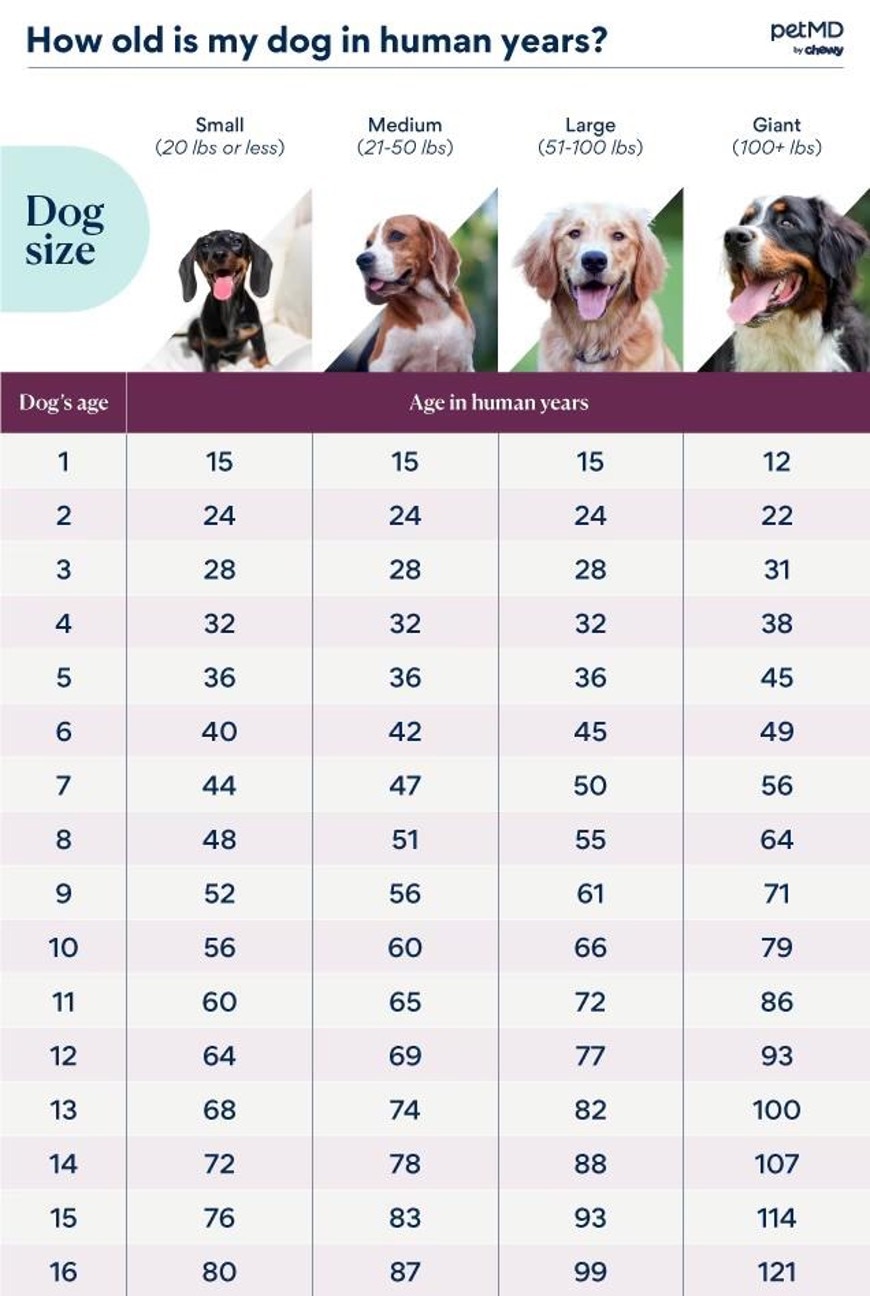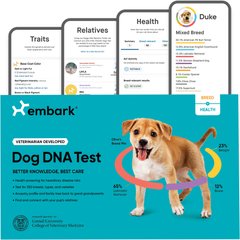How Old Is My Dog in Human Years? Calculating Dog Years to Human Years
Adobe Stock/Mary Swift
At some point, every pet parent has probably wondered, “How old is my dog in human years?” Being able to put a dog’s age into a more familiar context helps us better understand what our pup needs from us.
But calculating a dog’s age in human years isn’t as simple as we once thought. Read on to learn the best way to convert dog years to human years.
How To Calculate Dog Age
The outdated dog age calculator—multiplying your dog’s age in human years by seven—was simple, but inaccurate. While it does call attention to the general idea that dogs age more quickly than people, this method has a couple of big problems.
First, it treats every year of a dog’s life the same. In other words, it says that a 1-year-old dog is 7 in dog years, a 2-year-old dog is 14, a 3-year-old dog is 21, and so on. But this is not the case.
Compared to humans, dogs race through their early years. When dogs reach 1 year old, they are developmentally similar to a 15-year-old human teenager. And by their second birthday, most dogs are more or less comparable to a fully mature 24-year-old person.
At this point, though, their aging slows down. Just how dramatic that slowdown is depends on another important factor: the dog’s size.
How Old Is My Dog in Human Years?
Big dogs age more rapidly than small dogs. Scientists haven’t yet uncovered the reasons why, but the difference can be dramatic. For example, an 11-year-old Chihuahua is just entering their senior years, while an 11-year-old Great Dane has already exceeded their typical life expectancy.
There are no hard-and-fast rules for determining exactly how old a dog is in human years, but a general rule of thumb is that after a dog is 2 years old or so, one human year could be equivalent to:
-
Four years for small dogs
-
Four to five years for medium dogs
-
Five to six years for large dogs
-
Seven to eight years for giant dogs
This chart can help you put all this information together:

In the future, we might have an even more accurate way to determine how old a dog is in human years.
Scientists are looking into using methylation marks on dog DNA to determine what a dog’s biological age might be. Biological age is a determination of how the passage of time is affecting cells and tissues, while chronological age is simply a measure of how many times a dog (or a person) has circled the sun.
Common Signs of Aging in Dogs
For now, we’ll have to wait for a more accurate way to determine a dog’s age in human years. But recognizing when your dog reaches their senior years is still important. As dogs get older, pet parents might need to make changes to their pet’s nutrition, activity levels, veterinary care, and more.
Veterinarians generally consider dogs to be seniors when they’ve achieved 75% of their life expectancy. This happens at different ages based on a dog’s weight:
| Dog Size | Age When They're Considered a Senior |
|---|---|
| Small (20 pounds or less) | 9–11 years |
| Medium (21–50 pounds) | 8–10 years |
| Large (51–100 pounds) | 7–9 years |
| Giant (100+ pounds) | 6–7 years |
Other factors, such as a dog’s breed or overall health status, can also come into play. So, it’s helpful to look for common signs of aging to get a better idea of where a dog is in their lifespan.
-
Gray hair: Just like us, dogs start to go gray as they get older. Graying usually first becomes noticeable on a dog’s muzzle but can affect fur anywhere on their body.
-
Eyes and vision: When dogs enter their senior years, it’s normal for their eyes to become a little cloudy. This process, called lenticular sclerosis, doesn’t have a big impact on their vision. But other eye problems, such as cataracts, can look similar and lead to blindness.
-
Hearing: Dogs often develop age-related hearing loss as they get older, but this should happen gradually and not be too noticeable.
-
Activity level: Older dogs are usually mellower and less hyperactive than younger dogs, but they shouldn’t limp or have trouble taking part in their favorite activities when they want to.
-
Muscle mass: It’s not unusual for dogs to lose muscle mass with age, although this might be less obvious if the dog gets a lot of exercise.
-
Dental changes: A dog’s teeth can become worn with age. Plaque, tartar, gingivitis, periodontal disease, and other dental problems can also develop.
Of course, many of these signs of aging in dogs can also be symptoms of a health problem, particularly if they develop quickly or are especially severe.
Talk to your veterinarian if you have questions about your dog’s health or if you simply want to do everything you can to help your dog be happy and healthy, no matter their age.
Dog Years to Human Years FAQs
Is one human year seven years to a dog?
No, one human year is not seven years to a dog. Calculating a dog’s age in human years is more complicated than that.
How can you tell how old a dog is?
Figuring out the age of an adult dog is difficult. Puppies are easier because their teeth grow in on a predictable schedule. A veterinarian can examine a dog’s eyes, coat, muscles, teeth, and overall health to provide an estimate of a dog’s age.
How long do dogs live?
Small dogs typically live longer than large dogs. For example, Toy Poodles can live well into their teens, while Great Danes often die when they are only 7 or 8 years old.
Many other factors, including age, breed, genetics, lifestyle, nutrition, activity level, and veterinary care, also influence a dog’s life expectancy.

